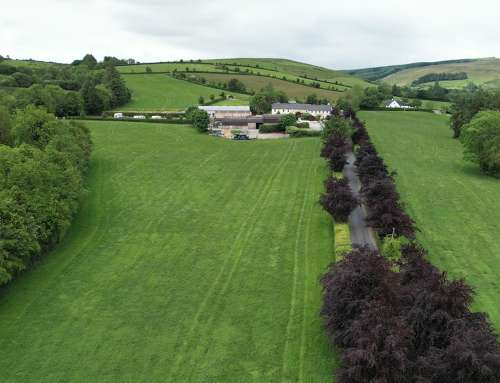The Sperrins is a beautiful land and a well-defined region that is divided up by many small townlands. At the same time it is united by a strong social texture derived from shared grazing, turf cutting, storytelling and farming diffused among the villages and landscape of the Sperrins. The memoirs of the Sperrins have been passed down through the years from family to family and place and field names still witness this process. The strongest part of the historical identity of the Sperrins comes from within its “Area of Outstanding Natural Beauty AONB.”
The essence of the Sperrins landscape is the land, divided by its people into ladder formation farm strips, shaped by both man and climate, finely detailed and complex in volume, lines and colours and maintained even today. The Sperrins landscape reflects the farm, divided into common heather mountain grazing and cultivated fields where sheep and cattle share grazing with the rest of nature. Hedges new and old, valleys deep and narrow hiding ancient plants, fungi and lost species of old Irish Oak trees create many Areas of Special Scientific Interest.
The Sperrins over the last few years has started to change its personality, becoming the residence of a new breed of tourism product providers who in turn are opening the way to an ever increasing tourism market. Services have multiplied and the local economy is now starting to base itself on services for walkers, cyclists, mountain bikers, day-trippers, and history and geology tours. Yet the people of the Sperrins are still absorbed in an industrious and vigorous life, where people, place and human relations find their proper place in time following the rhythm of past centuries in daily life, marked by season, festivities, markets, crops and the life cycle of cattle and sheep. The landscape which attracts the tourists, despite some deep scars (of asphalt, spruce forests, and wind turbines) has maintained its identity and ancient dignity.
As the tourism develops, future new shops will be a mixture of country souvenir, farm shops, boutiques, outdoor and bike shops. Inns, Pubs, Restaurants, Coffee shops will all get a new lease of life plus an ever increasing boost to business The Sperrins does not offer itself as an intact and polished image of an archaic rural idyll which is sometimes imagined (and never existed in reality) of heather mountains and green fields. Yet it is a place where one does not feel the oppression of the past or the anguish of the future The Sperrins is the green and brown heart of the north of Ireland, where one can measure up and meditate better than anywhere else the precision of the balance of nature which is ancient and precarious but yet sought out and maintained as indispensable. The link between nature and culture, work and time, daily labour and metaphysical hope, great history and daily politics are clear in the Sperrins.
Today’s Sperrins is a land neither enchanted nor lost, neither unaware nor cynical. People have remained cordial but are not yet two faced or worse servile. For now, time is not money and the Sperrins identity, paradoxically, is measured by what was not there and is not there. History has touched it, but the great industrial revolutions have spared it. Every novelty like every newly arrived person has had the time to adapt to tradition; the new to the old, the future to the past.
Without airport, without rail road, without highways the Sperrins is not a road junction or a place where one arrives by chance so has to be sought out. So far its people have been wise enough to say no to the big multinational hotels and such franchises. The municipal infrastructures follow the times, but the footsteps of what has always been done before are strong here In Politics we see great visions conflict, ideologies and grand utopias clash and resentment and common sense and opposite visions of the common good thrive, but within the Sperrins there is a municipal solidarity often almost tribal, ancient and never forgotten. The secular genius loci of the Sperrins – its distinctive trait through the centuries, have made it rise in today’s collective imagination to the status of a symbol




